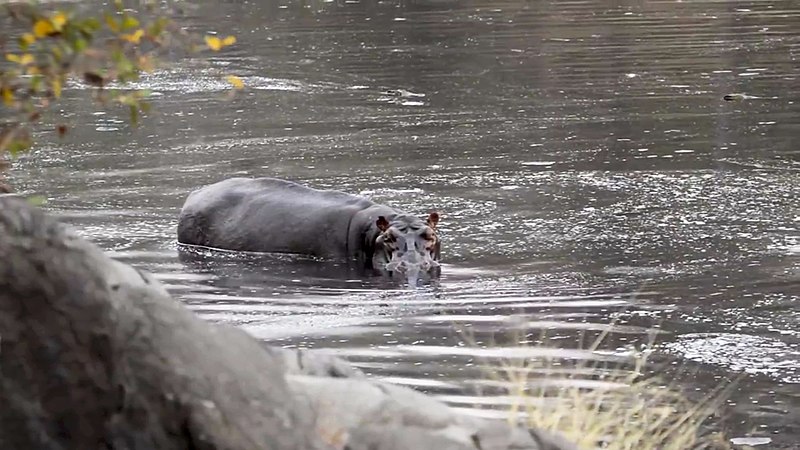Hippopotamus
Species Data
Class: Mammalia
Order: Cetartiodactyla
Family: Hippopotamidae
Scientific Name: Hippopotamus amphibius
IUCN Red List status: Vulnerable
Description
The Hippopotamus (Greek for ‘river horse’) is an amphibious, hoofed African mammal. At 3.5 metres long, 1.5 metres tall and 3.5 tonnes of weight, the size of adult males is thought to be surpassed by no other land animal bar elephants. Their body – covered by largely hairless brown-and-grey skin – features a bulky head, a small tail and stocky legs, the latter each sporting four hoof-ended toes. They are highly adapted to aquatic environments, with eyes and nostrils placed high on the head to be able to see and breathe during a swim.
Behaviour
The Hippopotamus tend to live by rivers and shallow pools, where a dominant male (bull) is joined by a group of females (cows) during the dry season. These colossal animals are herbivore night feeders, roaming for hours after sunset to feed on grasslands near water bodies. Despite their size the Hippopotamus require a relatively low volume of vegetation every night and help, in return, to strengthen ecosystems around them – their slow digestive process ensures that vast amounts of nutrients are fed back into rivers and lakes, boosting the fish that local communities rely on for food.


Habitat
The Hippopotamus are still found much across the distribution range they used to boast in 1959, even if populations have decreased. The species is present across savannah wetland habitats of nearly 30 African countries, but has been declared as extinct in Algeria, Egypt, Eritrea, Liberia and Mauritania. In Cameroon, these aquatic giants are present across the national parks and reserves of Deng Deng, Benoue, Kalamaloue and Faro.
Threats and Conservation
The Hippopotamus was classified by the IUCN as Vulnerable in 2006 and has retained the status in the years since. The IUCN’s latest assessment found an estimated 115,000-130,000 individuals across Africa, down from the 125,000-148,000 range that had been reported in 2008. The conservation body describes the Hippopotamus’ current status as “precarious” – it believes that habitat loss, unregulated hunting and the other growing and unabated threats faced by this species makes direct conservation action “a priority”.
In South Africa’s KwaZulu-Natal Province, our partner Wild Tomorrow Fund (WTF) has a vision to connect the MunYaWana Conservancy with the iSimangaliso UNESCO World Heritage Wetland Park, through the Greater Ukuwela Nature Reserve which sits between the two protected areas. The reserve is helping to expand river, wetland and floodplain habitat for South Africa’s largest Hippo population.
